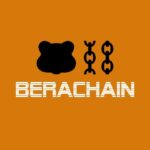In the Bitcoin Ecosystem (BTC), recent debate has attracted attention from developers, nodes and user operators. The proposed changes in Bitcoin Core, the software customers most used to interact with the network, and the elimination of restrictions in op_return, the ability to embed data in Bitcoin.
In the first example, this conflict gave rise to a more philosophical position than practices among protocol collaborators. As a result, as reported by Cryptootics, many nodes began to move to their alternative client, Bitcoin Knot, at the expense of core use.
At the time of this article, out of the total 22,064 active nodes in Bitcoin, 1.953 will use knots, while Core currently maintains 20,062 nodes, but according to Coindance, these maintain 20,062 nodes. This means that Knots represent almost 9% of the totalan unpublished percentage reflecting the recent growing adoption of this client.
These data can be observed in the following graphs (gray lines, total nodes, autumn yellow lines, core nodes, rising green lines, knot nodes).
What is Bitcoin Knot? Also, what characteristics do you have?
Bitcoin Knots is software created and managed by Luke Dashjr, a recognized developer in the Ecosystem and Co Founder of the Ocean Mining Pool, an initiative focused primarily on BTC distributed mining. DashJR claims that it is one of the most important voices for the proposed changes in Bitcoin Core, which could undermine the efficiency and decentralization of the network.
With me fork Bitcoin core, that is what it means Get the core base code Change to include additional features. While most of the code is shared with Bitcoin Core, Knott introduces certain adjustments that, according to the Defender, better protect the principles of decentralization and network efficiency. His GitHub repository highlights three configurations that distinguish them.
First, the knot limits the size of data embedded in the network in 42 bytes by OP_RETURN. Op_return is a type of transaction that allows you to store information in bitcoin files such as metadata, images, text, etc., but when used it can increase storage requirements and affect node performance. This limit is required Prevents excessive use Bitcoin for non-monatary data.
2nd place, knot Activate the “Reject Parasites” option by defaultthis filters out transactions that are considered low in the network value (spam), which consumes resources without bringing great benefits, etc. This helps to maintain memory (the set of transactions to be verified) cleaner and more efficient.
Finally, the knot provides the possibility of a re-related token transaction, but this option is Deactivated by default.
¿ y Bitcoin core?
Meanwhile, the open source Bitcoin Core (Knots also inherit its quality) is a Bitcoin Reference Client that most nodes use to get the network to work, developed by a community of regular collaborators. Thousands of historical contributionsand their updates will be published on bitcoincore.org after the review process.
Bitcoin core allows for wider limits in the OP_Return field (80 bytes) than in the knot. For example, if the core operator intends to node only transactions that contain up to 42 bytes of data, as Bitcoin Knot by default, then you must specify a client configuration.
Although there is no specific ability to reject low value or token-related transactions, it occurs at Bitcoin Knot, so the core allows you to adjust the rate and transfer policy to reduce its impact.
Therefore, it can be concluded that Core does not provide such fine or specific control. This reflects a more generalist and less restrictive approach compared to knots (which is neither better nor worse than the other knots).
Opinions about this discussion in the Bitconner community
The core of the competition is the relaxation of the proposed changes in Bitcoin Core, particularly the OP_Return restrictions. This is considered a risk of decentralization.
In X, the researcher and developer known as Callebtc have expressed his position in favour of Bitcoin Core. «Now is a great opportunity to show support for Bitcoin Core. Not because the knot can achieve something (it can’t, it was discussed infinitely), people become confused, angry, and They are manipulated by influencers Believing that the team behind Core cannot be trusted».
However, CalleBTC responses reflect diversity of opinions in ecosystems. The user responded in the thread of X: «I am not against innovation, but inflate the chain with any data through the relaxed boundaries of op_return. Bitcoin was designed as moneyIt’s not like a canvas of JPEG or embedded garbage. Maintaining the light chain protects nodes, decentralization, and long-term resilience. The knot does not attempt to “achiev” anything spectacular. It’s about keeping things tight, predictable and in line with the original spirit. Global consensus through simplicity».
Another added a more practical approach: «The core is developed by people, and people become corrupted. The best way to combat corruption is through competition in the free market. That’s the reason, Supporting increasing number of customers competing with each other. Decide who the node operator trusts».
Third comment I’ve deepened my distrust of Bitcoin Core: «They want to take autonomy from node operators and impose their own policies. It’s not surprising that there’s not much trust.
Given this, Callebtc provided an interesting response: «His own policy»? There is Dozens of different policy rulesyou’re just focusing on one of them and you’ve been blindly accepting everything else for years ».
Criticism of Jack Dorsey’s position and knot
This argument is also addressed by influential figures such as Jack Dorsey, a Bitcoin Core marine and development funding investor. Dorsey responded to Luke Dashl’s statement on Bitcoin Knot, Defend some ideas in circulation:«We’ve seen some statements that “Bitcoin Knot is part of the Bitcoin Core Project.” “Bitcoin Knot is another version of Bitcoin Core,” he writes, “Bitcoin Knot has more contributors than Bitcoin Core.”
Dorsy said Bitcoin Core has a solid development team and a community review process, but Knott looks like a project managed by one developer without external reviews. «Bitcoin Knots is a fork of Bitcoin core. It appears to have been developed by a single developer Increase changes directly without pairing ».
Dorsey’s Continuation: «The launch of Bitcoin Knot consists of the Bitcoin core source code modified in a set of around 1,400 Commit (a set of changes made in the code). Same individual issue publishes release One-sided way. There are no indications that someone else has contributed directly, checked the code or revised the Bitcoin Knot. Bitcoin Knot is not supported in Bitcoin Core Project».
Thus, the community continues this heated debate, but some questions arise.
For now, it seems to depend on who is asked. The truth is that almost 9% of nodes choose to tie the knot, so the ultimate response to Bitcoin’s crisis time and controversy is “more decentralized.”














